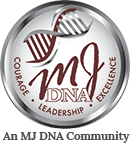Sarcoma Awareness Month and Assisted Living Communities
Sarcoma Awareness Month is held in July each year to increase awareness of sarcoma, a rare type of cancer that grows in bones and soft tissues. This month-long campaign helps to educate people about the symptoms, treatment options, and importance of early detection. This initiative also supports research efforts and encourages fundraising to find better treatments. By spreading awareness, the campaign hopes to improve the lives of those affected by sarcoma and to help patients and their families. Events, social media campaigns, and educational programs are organized to share information and stories about living with sarcoma in assisted living.
What is Sarcoma Awareness Month?
Sarcoma, a rare cancer that develops in the blood vessels, bones, cartilage, muscles, nerves, tendons, and fatty and fibrous tissues, must be addressed seriously. That’s why July serves as Sarcoma Awareness Month to shed light on this condition, how it develops, and how it is diagnosed and treated.
This type of cancer is rare and tends to hit patients who are younger compared to the majority of cancer patients. However, it doesn’t mean that it may not be a threat to anybody. There are certain types of conditions called uterine sarcoma that can affect women of any age.
Living with Sarcoma in Assisted Living
Age has been reported as a factor in the prognosis of bone and soft tissue sarcoma in elderly patients over or equal to 65. The standard therapy for this type of sarcoma is surgical resection, which includes elderly patients.
Unresectable sarcomas, however, can be treated through radiation or ion-beam therapy. However, elderly patients in assisted living with osteosarcoma may not benefit from adjuvant chemotherapy, which is standard for osteosarcoma. That is because its usefulness has not been verified, making it inadvisable for elderly patients. Thus, elderly patients must be diagnosed with sarcomas, particularly those in assisted living facilities.
Learning More About Sarcoma in Assisted Living
Sarcoma has two main types, soft tissue sarcomas, and bone sarcomas, which are important for people in assisted living to learn more about. Soft tissue sarcomas are the most common, with about 50 subtypes. On the other hand, bone sarcomas, also called bone cancer, have several other subtypes.
The cause of sarcoma is unknown, so it can develop in children and adults without any reason. However, some cases are linked to past exposure to radiation, viruses, or certain chemicals.
Major treatment for sarcoma includes radiation therapy, surgery, and chemotherapy. After therapy, a healthy diet is important for being diagnosed with sarcoma. However, no evidence points between diet and its recurrence.
Early Warning Signs of Sarcoma
It is crucial to have basic knowledge about sarcoma and how it develops, particularly for people in assisted living. The most common symptom of sarcoma is difficulty walking or reduced range of motion in a joint.
The more advanced type of sarcoma may cause patients to feel the following symptoms.
- Abdominal pain
- Bloody stools
- Chest pains
- Constipation
- Reduced appetite
- Shortness of breath
- Unexplained fatigue
- Unintentional weight loss
Note that sarcomas are sometimes mistaken for abscesses, hematomas, or lumps of fat. Nevertheless, the more serious they become when they become bigger, the harder they are to treat. So, in this type of condition, early detection is critical.
Click here to learn more about the levels of care at Fallbrook Assisted Living!
Fallbrook Assisted Living is proud to offer its services to Fremont, NE, and surrounding areas and cities: Arlington, Cedar Bluffs, Ames Nickerson, Fontanelle, Arlington, Leshara, Colon, and Hooper




